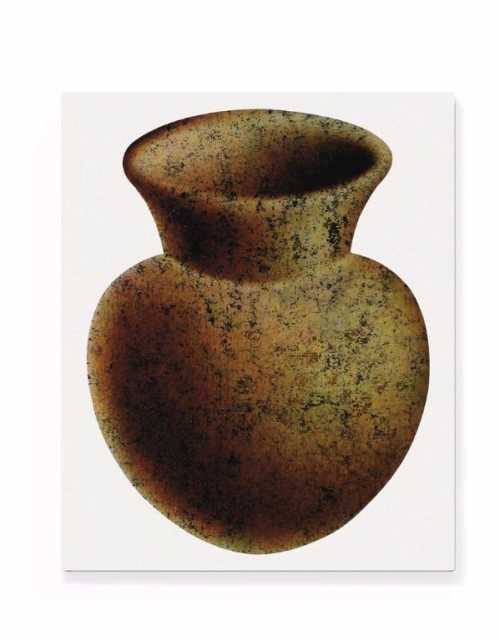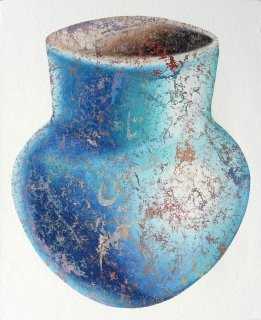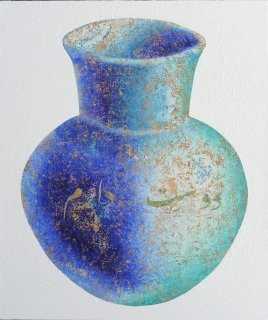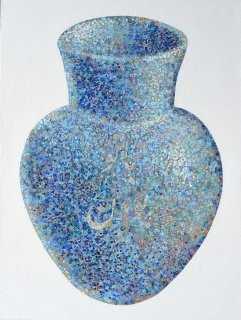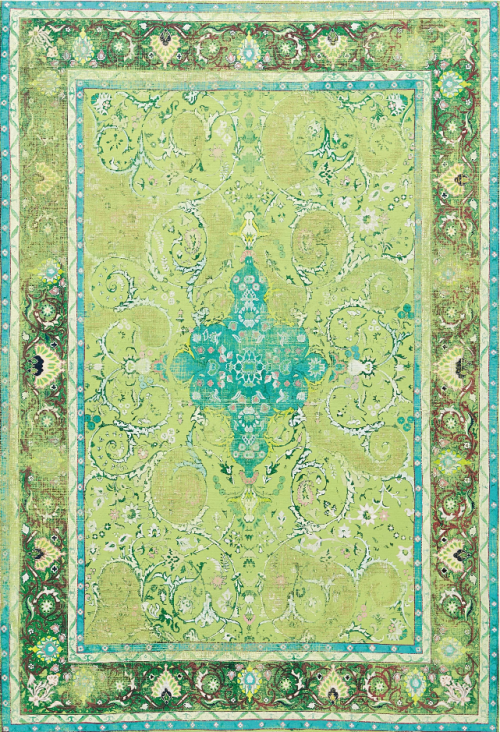- Tar Jar 2006
- acrylic and oil on canvas
- Painting
- 150 * 190 cm
- signed and dated in Farsi (on the reverse)
Artwork Description
Farhad Moshiri's Jars series evokes the relationship between tradition and modernity in present-day Iran. Ceramics have had a distinguished history in Iran, especially in the Islamic era, but originate from its distant pre-historic past. From the fragmentary remains at Susa, almost 6000 years ago, to Sassanian vessels just pre-dating Islam, to the technically advanced wares of 13th century Seljuk potters and 17th century Safavids, no other country in the region can claim such a close association to the art form.
It is this tradition that Moshiri is objectifying by creating paintings of pots and jars. Moshiri carefully achieves effects of three-dimensionality through modelling and shade to create convincing images of these voluminous vessels. However, his signature technique of folding and crushing the canvas, thus flaking the paint and mimicking cracquelure which, contrasted with the flatness of the background colour, remind one that these remain two-dimensional paintings and not three dimensional objects.
There is no single shape of jar. Moshiri plays with many variations of the jar- sometimes more bulbous, sometimes with a larger flaring mouth. Anthropomorphic at times, inanimate object at others, they recall ceramics of past times without ever making direct reference to actual types. In the present work, the shape is suggestive of a mosque lamp yet still non specific. The repetition, variation and cultural relevance, combined with the strong colours and outlines which lend these images of jars a strongly graphic poster-like effect make them true icons of Iranian Pop Art for the 21st century.
In some examples, script -often witty and banal- is emblazoned on the surface. Others, such as the present example, are left devoid of text, inviting the viewer The jars can be read on several levels. As objects, they are evocative of ancient and modern, non figurative and highly sculptural. Conceptually, the metaphor of the vessel brings with it connotations of the feminine form, the receptacle waiting to be filled. At the same time, the bulbous shape of the exterior invited comparisons to male anatomy. Contradictory yet complementary readings are invited.
It is this tradition that Moshiri is objectifying by creating paintings of pots and jars. Moshiri carefully achieves effects of three-dimensionality through modelling and shade to create convincing images of these voluminous vessels. However, his signature technique of folding and crushing the canvas, thus flaking the paint and mimicking cracquelure which, contrasted with the flatness of the background colour, remind one that these remain two-dimensional paintings and not three dimensional objects.
There is no single shape of jar. Moshiri plays with many variations of the jar- sometimes more bulbous, sometimes with a larger flaring mouth. Anthropomorphic at times, inanimate object at others, they recall ceramics of past times without ever making direct reference to actual types. In the present work, the shape is suggestive of a mosque lamp yet still non specific. The repetition, variation and cultural relevance, combined with the strong colours and outlines which lend these images of jars a strongly graphic poster-like effect make them true icons of Iranian Pop Art for the 21st century.
In some examples, script -often witty and banal- is emblazoned on the surface. Others, such as the present example, are left devoid of text, inviting the viewer The jars can be read on several levels. As objects, they are evocative of ancient and modern, non figurative and highly sculptural. Conceptually, the metaphor of the vessel brings with it connotations of the feminine form, the receptacle waiting to be filled. At the same time, the bulbous shape of the exterior invited comparisons to male anatomy. Contradictory yet complementary readings are invited.
Realized Price
161,825 USD
Min Estimate
93,751 USD
Max Estimate
131,996 USD
Average Artwork Worth
+48.182%
Average Growth of Artwork Worth
Sales Performance Against Estimates
Average & Median Sold Lot Value
2020 - 2024
Performance vs. Estimate
2020 - 2024
Sell-through Rate
2020 - 2024
Similar Artworks
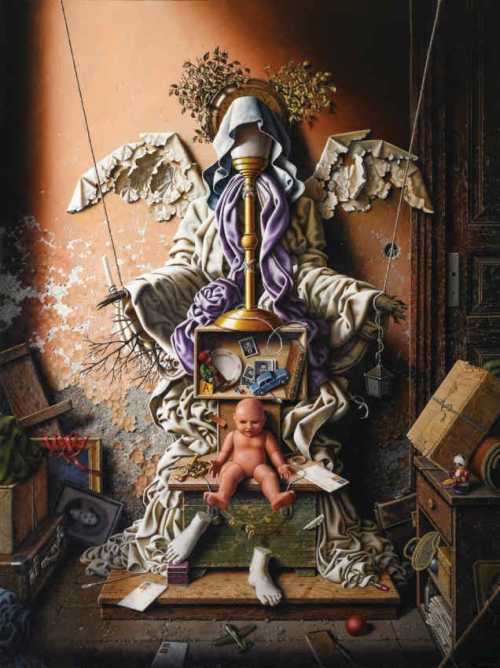
Paper Wings
Estimation
20,000,000,000﷼
73,529 USD
-
30,000,000,000﷼
110,294 USD
Realized Price
32,000,000,000﷼
117,647 USD
28%
Sale Date
Tehran
-
1 July 2022
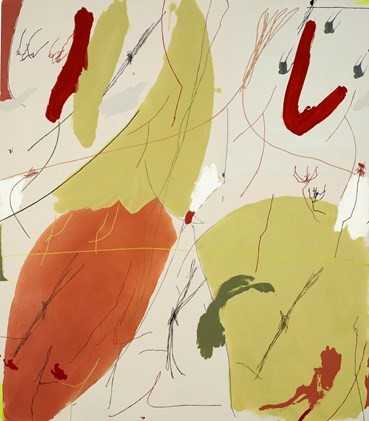
Birdie on the Back of a Sleeping Tiger
Estimation
$40,000
-
$60,000
Realized Price
$151,200
202.4%
Sell at
Sale Date
Christie's
-
28 September 2023
